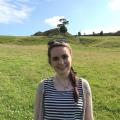
DOCTOR Catherine Calderwood spent half a decade influencing policy and practise in the top medical job in Scotland before her resignation in disgrace.
Her appointment as chief medical officer for Scotland came after more than two decades of work in the health service, including on the investigation into the deaths of mothers and newborn babies at Morecombe Bay.
Born in 1968, Dr Calderwood completed her undergraduate studies at Cambridge University, before qualifying as a medic from the University of Glasgow in 1993.
She worked as a junior doctor in Glasgow Royal Infirmary and the Royal Infirmary of Edinburgh before specialising in obstetrics and gynaecology.
This knowledge was key to her involvement in helping to reduce stillbirths and neonatal deaths in Scotland since becoming an adviser to the government in 2010.
After taking on the role of chief medical officer in 2015, Dr Calderwood, 51, continued to have a maternity medicine and antenatal clinic at the Royal Infirmary of Edinburgh.
She chairs the UK maternal, newborn and infant clinical outcome review programme and the Scottish Government stillbirth working group and is also a member of Royal College of Obstetricians and Gynaecologists stillbirth clinical studies group.
However, the doctor’s position as chief medical officer was considered untenable after she was photographed at her second home, in contravention of coronavirus lockdown rules.
Despite apologising after the pictures of her family hear her Fife home appeared in the Sun on Sunday, Dr Calderwood resigned “with a heavy heart”.
READ MORE: Catherine Calderwood resigns after travelling to second home in lockdown
After she stepped down on Sunday evening, First Minister Nicola Sturgeon paid tribute to Dr Calderwood and her “transformational” work.
She said: “While she has made a very serious mistake in her actions, that should not detract from the fact that as CMO she has made a highly valuable contribution to the medical profession and to health in Scotland, and I have no doubt she will continue to do so in future.”
Scotland is in lockdown. Shops are closing and newspaper sales are falling fast. It’s no exaggeration to say that the future of The National is at stake. Please consider supporting us through this with a digital subscription from just £2 for 2 months by following this link: http://www.thenational.scot/subscribe. Thanks – and stay safe.



Why are you making commenting on The National only available to subscribers?
We know there are thousands of National readers who want to debate, argue and go back and forth in the comments section of our stories. We’ve got the most informed readers in Scotland, asking each other the big questions about the future of our country.
Unfortunately, though, these important debates are being spoiled by a vocal minority of trolls who aren’t really interested in the issues, try to derail the conversations, register under fake names, and post vile abuse.
So that’s why we’ve decided to make the ability to comment only available to our paying subscribers. That way, all the trolls who post abuse on our website will have to pay if they want to join the debate – and risk a permanent ban from the account that they subscribe with.
The conversation will go back to what it should be about – people who care passionately about the issues, but disagree constructively on what we should do about them. Let’s get that debate started!
Callum Baird, Editor of The National
Comments: Our rules
We want our comments to be a lively and valuable part of our community - a place where readers can debate and engage with the most important local issues. The ability to comment on our stories is a privilege, not a right, however, and that privilege may be withdrawn if it is abused or misused.
Please report any comments that break our rules.
Read the rules hereLast Updated:
Report this comment Cancel